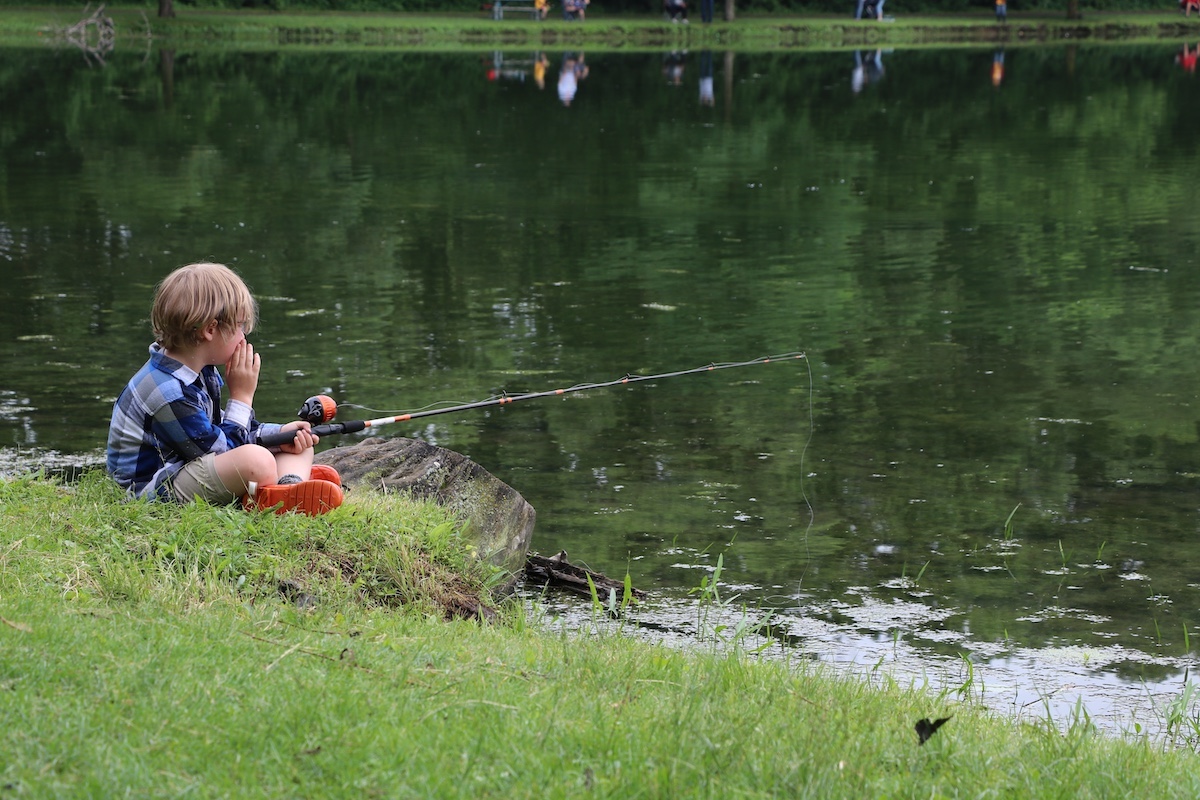
Photo by Jamie Johannsen, Pixabay.




Photo by Jamie Johannsen, Pixabay.
Fishing is more than just a hobby; it’s a family tradition that fosters patience, relaxation and a deep appreciation for nature. For those looking to introduce youngsters to the joys of angling, bluegill fishing offers the perfect gateway. This hardy and plentiful fish is ideal for beginners, providing plenty of excitement with minimal equipment and a high success rate. Here’s everything you need to know to get started in Illinois.

Bluegill (Lepomis macrochirus) are a small, freshwater fish native to North America. They are easily recognizable by their distinctive blue and purple hues on the gill covers and their yellow to orange bellies. These fish thrive in ponds, lakes and slow-moving streams, making them accessible to anglers across Illinois. Bluegill are also prolific breeders, ensuring a steady population and plenty of opportunities for young anglers to reel in their first catch. They have a good appetite in many seasons and will generally bite at any time of the day.
One of the greatest appeals of bluegill fishing is its simplicity. You don’t need expensive gear or a vast array of tackle to get started. Here’s a basic list of what you’ll need:
Timing is everything when it comes to successful bluegill fishing. While bluegill can be caught throughout the day, the best times to target them are during the early morning and late afternoon. During periods when the sun is not directly overhead, bluegill are more active and feed more aggressively, increasing your chances of a catch. Look for them in shallow waters near the shoreline where they forage for food. As the sun rises higher, they may move to deeper waters, so adjust your fishing location accordingly. Many times you can see bluegill near the surface of the water off a pier. They’ll sit near the edge of the pier and swim out into the lake. Having this visual opportunity helps get youth excited for the sport.
In the spring you may find bluegill in shallow water with a lake bottom that looks like a lunar landscape. A series of ‘bowls’ are the nests of bluegill that are spawning. Fishing can be non-stop when you find these areas. This is a great time take a little one with you for hot fishing action during the spawn.
Bluegill fishing isn’t just about the thrill of the catch. It’s an opportunity to teach youngsters about nature, ecosystems and the importance of conservation. Watching youngsters catch fish after fish, even if they aren’t keepers, provides endless excitement and valuable learning experiences. Bluegill are resilient fish. They return to the water well with a big splash and powerful thrust into deeper waters. They are hardy enough to allow a quick picture to be taken and then returned to the water strong enough to swim away.

Before you head out to your favorite fishing spot, it’s crucial to check the local fishing regulations. Illinois has specific rules regarding fishing seasons, size limits, and daily catch limits to ensure sustainable fishing practices. You can find the most up-to-date information on the Illinois Department of Natural Resources’ (IDNR) I Fish Illinois website or by consulting local fishing guides or reviewing signage at fishing locations. Following these regulations helps preserve fish populations and ensures that everyone can enjoy fishing for years to come.
For further tips, visit the I Fish Illinois website Taking Kids Fishing and Places to Fish links. That website also has a section about bluegill that you will find useful.
Bluegill are fabulous table fare. You may opt to catch and release fish, or you may choose to keep a few for the table. Here’s a simple guide on how to clean and cook your bluegill.

Here’s a simple and delicious recipe to enjoy your fresh catch:
Illinois offers a wealth of beautiful fishing spots, from serene ponds in local parks to expansive lakes such as Lake Michigan and Carlyle Lake. Check your local subdivisions and forest preserves as well. This is our state fish and abounds nearly everywhere!
Remember to take a camera. Posting your first fish picture to social media or printing it and keeping it on the nightstand will enhance a lifetime of memories of bluegill fishing.
Steven Beltran dołączył do Policji Ochrony Przyrody stanu Illinois w 2000 roku, a w 2024 roku przeszedł na emeryturę jako sierżant w północno-zachodnim Illinois.
Prześlij pytanie do autora